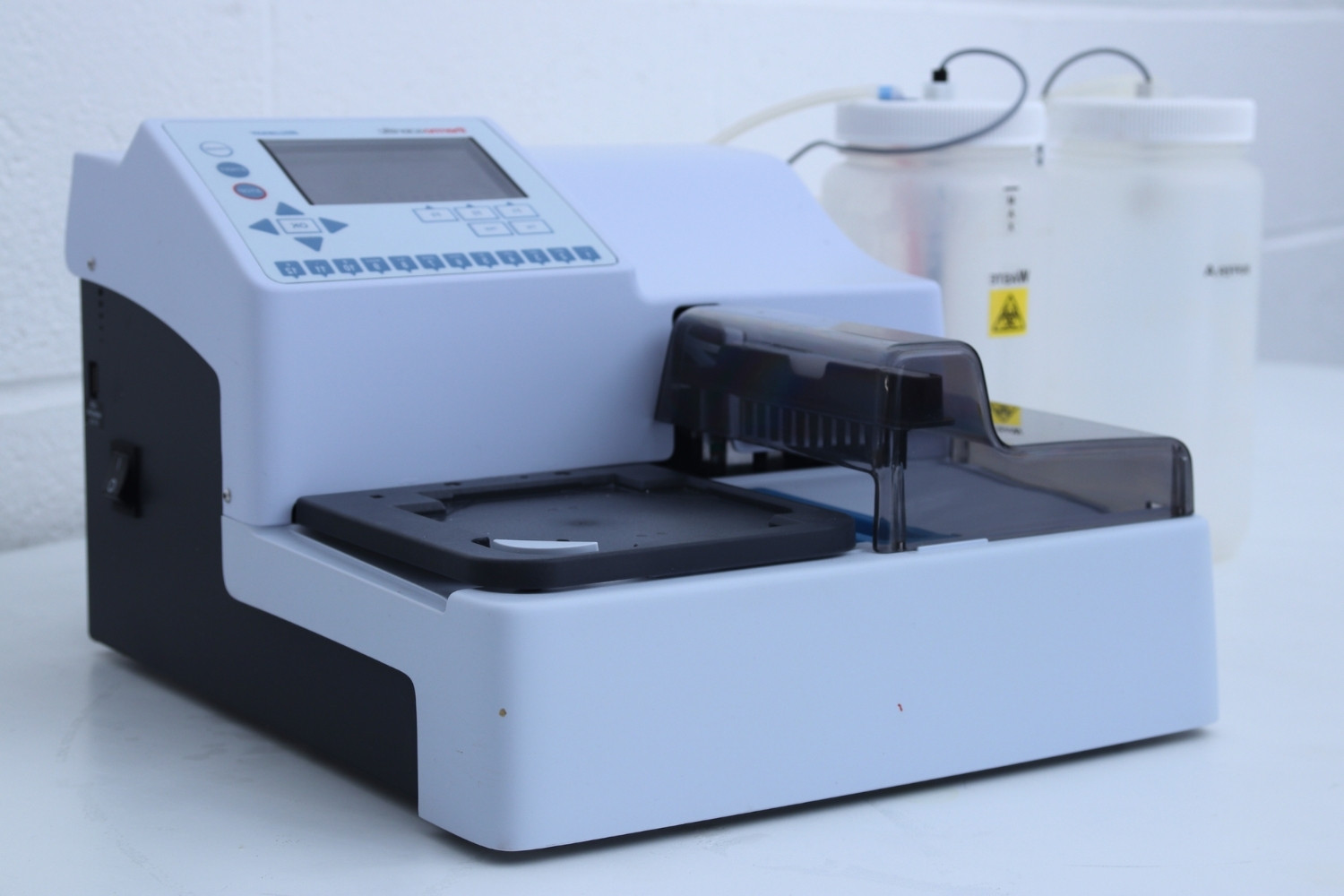
What is a microplate washer? A microplate washer is a lab tool used to clean microplates, which are flat plates with multiple "wells" used in experiments. These washers help remove unbound substances from the wells, ensuring accurate results in tests like ELISA (enzyme-linked immunosorbent assay). They save time and reduce errors by automating the washing process. Microplate washers come in various types, including manual, semi-automated, and fully automated versions. They are essential in fields like biology, chemistry, and medical research. Understanding how they work and their benefits can greatly enhance lab efficiency and accuracy.
What is a Microplate Washer?
A microplate washer is a laboratory instrument used to clean microplates, which are flat plates with multiple wells used in various assays and experiments. These washers are essential in many scientific fields, including biochemistry, molecular biology, and immunology.
- Microplate washers are designed to remove unbound substances from wells, ensuring accurate assay results.
- They can handle various plate formats, including 96-well, 384-well, and 1536-well plates.
- These devices are crucial in ELISA (Enzyme-Linked Immunosorbent Assay) procedures, where precise washing steps are necessary.
How Does a Microplate Washer Work?
Understanding the working mechanism of a microplate washer can help appreciate its importance in laboratory settings.
- Microplate washers use a series of needles to dispense and aspirate washing solutions into and out of the wells.
- The washing process typically involves multiple cycles to ensure thorough cleaning.
- Some advanced models include programmable protocols, allowing customization of washing steps for different assays.
Benefits of Using a Microplate Washer
Using a microplate washer offers several advantages over manual washing methods.
- Automated washing reduces the risk of human error, leading to more consistent results.
- These devices save time, allowing researchers to focus on other critical tasks.
- They minimize the risk of cross-contamination between wells, which is crucial for accurate data.
Types of Microplate Washers
Microplate washers come in various types, each suited for specific applications.
- Strip washers are designed for washing individual strips of wells, making them ideal for smaller assays.
- Full-plate washers can handle entire microplates at once, suitable for high-throughput screening.
- Some models are equipped with magnetic bead washing capabilities, used in assays involving magnetic particles.
Key Features to Look For
When selecting a microplate washer, certain features can enhance its performance and usability.
- Adjustable needle positions allow for precise control over washing and aspiration.
- Programmable protocols enable customization for different assays and experiments.
- Compatibility with various plate formats ensures versatility in the lab.
Maintenance and Care
Proper maintenance of a microplate washer is essential for its longevity and performance.
- Regular cleaning of the needles and tubing prevents clogs and ensures efficient operation.
- Calibration checks should be performed periodically to maintain accuracy.
- Using the recommended washing solutions can prevent damage to the instrument.
Applications in Research
Microplate washers are indispensable in many research areas due to their versatility and efficiency.
- They are widely used in drug discovery for high-throughput screening of potential compounds.
- In clinical diagnostics, they play a crucial role in ELISA tests for detecting diseases.
- Environmental testing labs use them for analyzing water and soil samples.
Innovations in Microplate Washers
Recent advancements have made microplate washers even more efficient and user-friendly.
- Some models now feature touch-screen interfaces for easier operation.
- Integration with laboratory information management systems (LIMS) allows for seamless data management.
- Enhanced washing protocols can handle more complex assays, expanding their application range.
Common Issues and Troubleshooting
Even the best microplate washers can encounter problems. Knowing how to troubleshoot common issues can save time and frustration.
- Clogged needles are a frequent issue; regular cleaning can prevent this.
- Inconsistent washing may result from improper calibration; periodic checks are essential.
- Software errors can often be resolved by updating the firmware or consulting the manufacturer's support team.
The Final Word on Microplate Washers
Microplate washers are essential tools in labs. They ensure accuracy, save time, and improve efficiency. These devices handle various tasks, from washing to dispensing, making them versatile. They're crucial in research, diagnostics, and drug development. With advancements, modern washers offer better precision and user-friendly interfaces. Regular maintenance and proper usage extend their lifespan and performance. Investing in a quality microplate washer can significantly impact lab results. Understanding their features and benefits helps in making informed decisions. Whether you're a seasoned researcher or new to the field, knowing about microplate washers is valuable. They streamline processes, reduce errors, and enhance productivity. In short, these devices are indispensable in scientific and medical labs. Keep these facts in mind when considering equipment for your lab. Happy experimenting!
Was this page helpful?
Our commitment to delivering trustworthy and engaging content is at the heart of what we do. Each fact on our site is contributed by real users like you, bringing a wealth of diverse insights and information. To ensure the highest standards of accuracy and reliability, our dedicated editors meticulously review each submission. This process guarantees that the facts we share are not only fascinating but also credible. Trust in our commitment to quality and authenticity as you explore and learn with us.
